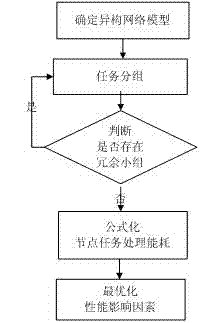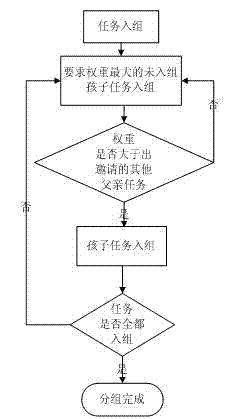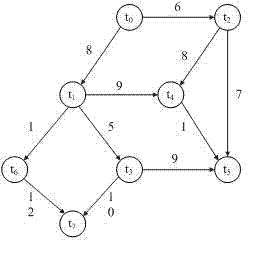Task allocation algorithm in wireless sensor network based on node property
A task allocation algorithm and wireless sensor technology, applied in wireless communication, energy-saving ICT, network traffic/resource management, etc., can solve the problems of not reflecting the real-time application, failing to guarantee task parallel processing, etc., and achieving simple and convenient task allocation , Simplify the task allocation strategy and realize the effect of system energy
- Summary
- Abstract
- Description
- Claims
- Application Information
AI Technical Summary
Problems solved by technology
Method used
Image
Examples
Embodiment Construction
[0025] Specific embodiments of the present invention will be further described in detail below.
[0026] like figure 1 Shown: is the determination method of the node performance index, including the following steps:
[0027] (1) Use a picture to construct a heterogeneous node model of all wireless sensors, represents a collection of nodes, is a set of edges. Each sensor node have three properties , and , which respectively represent the remaining energy of the node, the computational energy consumed by the node to process the unit data and the rate of the node to process the unit data. any two nodes and the edge between have an attribute variable representative node and The unit communication energy consumption between ( ). use diagram to represent the task model. is a collection of tasks, is the set of weighted edges between any two tasks. each task have an attribute , represents the number of units of data that each task needs to proc...
PUM
 Login to View More
Login to View More Abstract
Description
Claims
Application Information
 Login to View More
Login to View More - R&D
- Intellectual Property
- Life Sciences
- Materials
- Tech Scout
- Unparalleled Data Quality
- Higher Quality Content
- 60% Fewer Hallucinations
Browse by: Latest US Patents, China's latest patents, Technical Efficacy Thesaurus, Application Domain, Technology Topic, Popular Technical Reports.
© 2025 PatSnap. All rights reserved.Legal|Privacy policy|Modern Slavery Act Transparency Statement|Sitemap|About US| Contact US: help@patsnap.com



